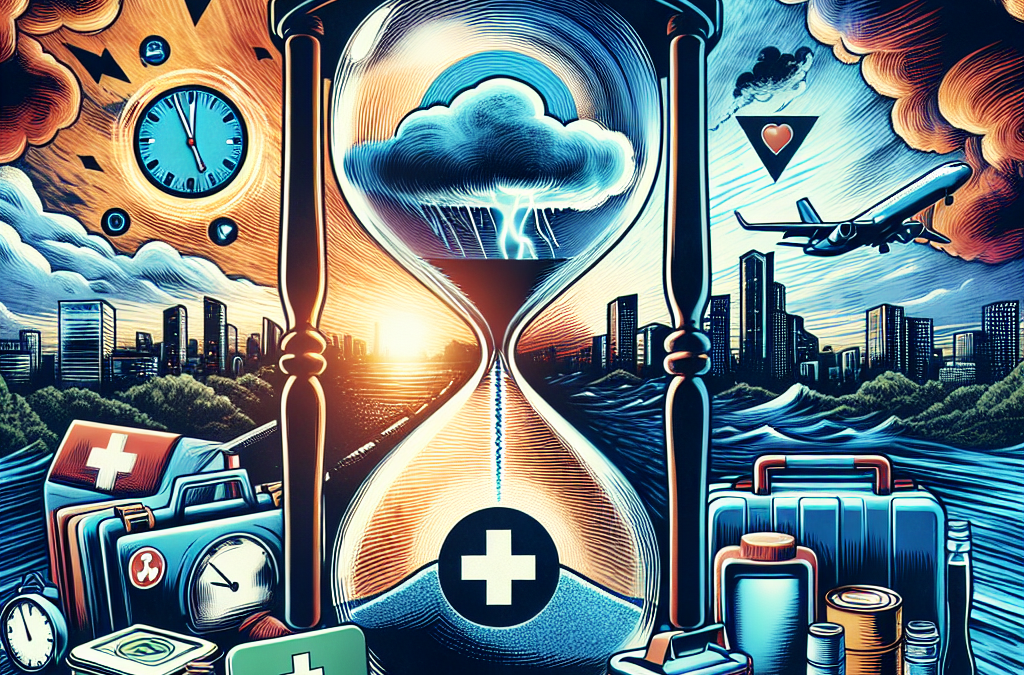After Significant Life Changes
Understanding Life Changes
Life can throw us a curveball at any moment, right? From moving to a new place to welcoming a new family member, significant changes can really shift our priorities and affect our disaster preparedness. It’s essential to step back and evaluate what these changes mean for our strategy. Did you move to an area prone to flooding? Now’s the time to reassess.
In my experience, every major life change has been a red flag for reevaluation. Take parents, for example; had I known I needed to consider the safety of a newborn earlier, I might have prevented some major panic later on. It’s better to address these shifts proactively instead of scrambling later.
Additionally, consider any physical changes to your home or lifestyle. Do you have pets? Are your kids now old enough to understand safety plans? All of these factors require a fresh look at your disaster preparedness strategy. Don’t overlook the significance of what seems like small changes; they can have a sizable impact.
After Experiencing a Disaster
The Importance of Reflecting
If you’ve ever gone through a disaster, you know it can be a tumultuous experience. Once the storm has passed, it’s crucial to take a moment to reflect. What went wrong? What did you do right? Evaluating your previous strategy can provide clarity and insight that you’ve never considered before.
From my own journey, I vividly remember the chaos during an unexpected flood. While I had a basic plan, it quickly became apparent that I hadn’t accounted for my elderly neighbor and how I could help them. This reflection, in hindsight, showed me how vital it is to think of everyone in our community.
So, when disaster strikes, take some time to jot down what you learned from that experience. What systems failed? What resources were invaluable? This knowledge is gold for crafting a better strategy moving forward.
Thank you for reading this post, don't forget to subscribe NOW for FREE!
When New Protocols or Technologies Emerge
Staying Updated
The world is constantly evolving, and so are disaster preparedness protocols and technologies. If your local community introduces new measures or programs, make sure to stay updated. It might seem like a hassle, but putting in the effort now can save you a ton of stress later down the road.
I remember when my area updated its emergency response systems. The integration of a new alert system caught me off guard because I wasn’t on top of the latest information. Trust me, I learned to prioritize staying plugged into local news and updates!
Don’t just stick with the same old plan because it worked before; be adaptable. Embrace the new technology and protocols that are designed to keep you and your loved ones safe. An updated strategy can mean the difference between being prepared and being caught off guard.
Annually As Part of Routine Maintenance
Making It a Habit
When life gets busy, our disaster preparedness strategies can easily fall by the wayside. That’s why I think it’s a great idea to evaluate your readiness and plan as part of an annual routine. Treat it like cleaning out your closet; it can be a bit tedious, but it’s necessary for peace of mind!
I block out time once a year to check my emergency supplies, review my escape routes, and talk with my family about our plans. It becomes a family bonding exercise! Plus, it’s a great way to ensure everyone’s aware of what to do in case of an emergency, helping to build confidence.
Make it enjoyable while you’re at it. Maybe combine your disaster planning with a fun family dinner or outing. You’ll not only be ensuring safety but also fostering a spirit of teamwork within your household!
When You Move to a New Location
Assessing New Risks
As someone who’s moved several times, I can testify that each new location brings its own set of challenges and risks. It’s essential to assess your disaster preparedness strategy every time you make a move. Familiarize yourself with the common disasters that occur in your new area.
For instance, moving from the Midwest to the coast in hurricane season was a real eye-opener for me. In my old town, blizzards were my main concern, but hurricanes required a whole new level of planning. Make sure you know what challenges may arise at your new address.
Additionally, connect with your neighbors or local community groups. They can provide you with insights and advice on what you should prioritize based on their experiences. That local knowledge can be a game changer!
FAQ
What is disaster preparedness?
Disaster preparedness refers to the measures taken to prepare for potential emergencies and ensure a prompt and effective response when a disaster strikes. This typically includes having plans, supplies, and training in place.
Why is it important to evaluate my disaster preparedness strategy?
Evaluating your disaster preparedness strategy is crucial to ensure you’re ready for emergencies. It helps identify possible weaknesses, incorporates new information, and ensures you have the necessary resources in place.
How often should I review my disaster preparedness plan?
While it can vary based on personal circumstances, I recommend reviewing your disaster preparedness plan at least once a year or whenever significant life changes occur.
What should I include in my disaster preparedness plan?
Your disaster preparedness plan should include emergency contacts, evacuation routes, supply lists, medical information, and any specific procedures for your family or household. Consider making it flexible to adapt to different types of disasters.
Can I involve my family in this process?
Absolutely! Involving your family in the planning process not only makes it a collaborative effort but also ensures everyone understands their roles and responsibilities. It can also help alleviate anxiety about disasters when they know what to expect.






